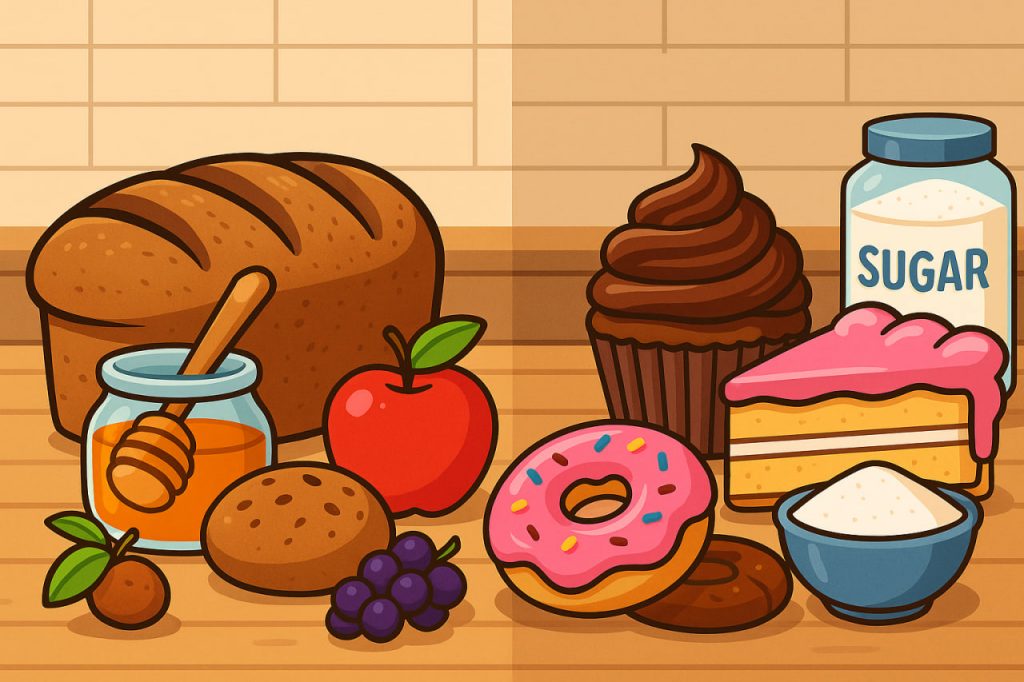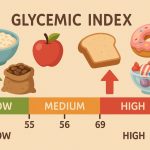Pastries — fragrant, soft, and delicious — are among the world’s most beloved foods. From croissants and pies to muffins and cupcakes, baked goods bring comfort and joy. Yet, not all pastries are equal. Some nourish the body with whole ingredients, while others overload it with sugar, fat, and additives. Understanding the difference between healthy and unhealthy pastries helps us make smarter choices without giving up the pleasure of baking.
What Makes Pastry Unhealthy
Traditional industrial pastries are often created for taste and long shelf life rather than nutrition. They usually contain:
- Refined white flour, stripped of fiber and nutrients, which spikes blood sugar levels.
- Excess sugar, contributing to obesity, insulin resistance, and dental issues.
- Trans fats and hydrogenated oils found in margarine, which increase cholesterol and heart disease risk.
- Artificial additives, such as colorants, flavor enhancers, and preservatives.
These ingredients make pastries soft and appealing but also turn them into calorie-dense, nutrient-poor foods. Regular consumption can lead to fatigue, digestive problems, and metabolic disorders.
The Science of Healthy Baking
Healthy pastries rely on natural, whole ingredients that provide energy and nourishment without harming the body. Instead of refined products, they use alternatives that support balanced nutrition:
- Whole-grain or oat flour — richer in fiber and minerals.
- Natural sweeteners such as honey, maple syrup, or mashed fruit.
- Plant-based oils (olive, coconut, avocado) instead of margarine or shortening.
- Greek yogurt, cottage cheese, or nut milk to replace heavy cream.
- Nuts, seeds, and berries to boost antioxidants and healthy fats.
This type of baking doesn’t just taste good — it helps stabilize energy levels, supports digestion, and provides essential vitamins.
Examples of Unhealthy vs. Healthy Pastries
| Type | Unhealthy Version | Healthier Alternative |
|---|---|---|
| Muffins | Made with white flour, sugar, and butter | Made with oat flour, honey, and banana |
| Cookies | Contain palm oil and trans fats | Made with almond flour and dark chocolate |
| Croissants | Filled with margarine and processed cream | Whole-grain croissants with natural nut butter |
| Cakes | Heavy frosting and refined sugar | Yogurt-based frosting with berries |
| Pies | Shortcrust with lard and white flour | Whole-grain crust with fruit filling |
Healthy pastries can still satisfy cravings while supporting heart health and energy balance.
The Role of Portion and Frequency
Even the healthiest pastries should be enjoyed in moderation. Overeating, even with wholesome ingredients, can strain digestion and raise calorie intake. Nutritionists recommend treating pastries as occasional snacks, ideally paired with protein or fiber to reduce sugar absorption.
For example, a slice of banana bread with Greek yogurt or tea is far better than several pastries eaten on an empty stomach.
The Importance of Homemade Baking
Homemade baking gives full control over ingredients and preparation. It eliminates hidden sugars, trans fats, and preservatives. Baking at home also encourages creativity — experimenting with flours, seeds, and natural flavors like cinnamon, vanilla, and cocoa.
Moreover, baking can be a relaxing ritual, bringing emotional comfort and mindfulness. When we bake consciously, we reconnect with food as nourishment rather than indulgence.
Baking Innovations for Health
Modern food science is transforming how pastries are made. Bakeries now use:
- High-protein flours (from chickpeas, quinoa, or lentils).
- Low-glycemic sweeteners such as stevia or erythritol.
- Fermented doughs that improve digestion and reduce gluten sensitivity.
- Vegan recipes that replace animal fats with nutrient-rich plant oils.
These innovations allow people with dietary restrictions — from diabetics to vegans — to enjoy pastries safely.
The Balance Between Taste and Health
The secret to healthy pastries lies not in removing sweetness but in finding balance. A well-made whole-grain cookie or berry tart can be just as delicious as a sugary one. The goal is to savor food mindfully, appreciating natural flavors and textures rather than overwhelming the palate with excess sugar or fat.
Interesting Facts
- The earliest pastries were made in ancient Egypt, using honey and dates.
- Industrial baking rose in the 19th century, when refined sugar and flour became widely available.
- Whole-grain flours contain up to three times more nutrients than white flour.
- Dark chocolate (70% cocoa or more) is a powerful antioxidant and heart-friendly dessert ingredient.
P.S. I heartily recommend you to eat less flour, sugar, and unhealthy dairy products
Glossary
- Trans fats — artificial fats created by hydrogenating vegetable oils, harmful to heart health.
- Glycemic index — a measure of how quickly a food raises blood sugar levels.
- Whole grain — grains that retain their bran, germ, and endosperm, rich in fiber and nutrients.
- Erythritol — a low-calorie natural sweetener that doesn’t affect blood sugar.
- Fermentation — the process by which yeast or bacteria break down carbohydrates, improving texture and digestibility.


